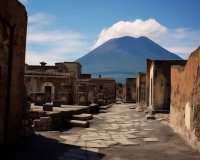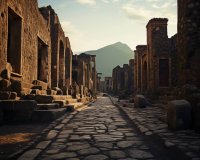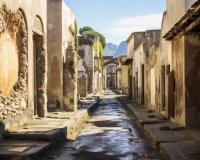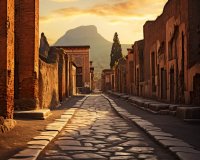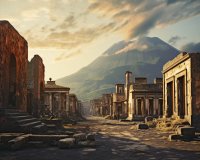Maximizing Your Pompeii Experience: A Day Tour Guide
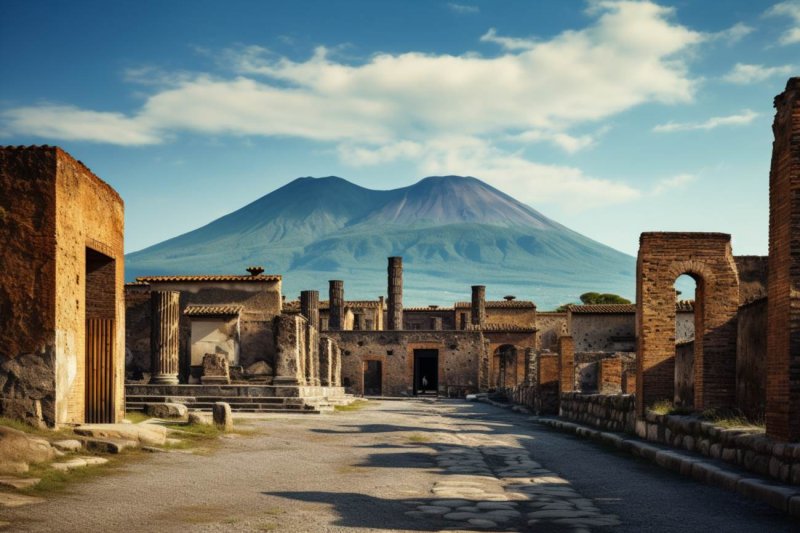
Maximizing Your Pompeii Experience: A Day Tour Guide
Welcome to the ancient city of Pompeii, a place frozen in time by the catastrophic eruption of Mount Vesuvius in 79 AD. Visiting Pompeii is a journey into history, a chance to walk in the footsteps of ancient Romans, and an opportunity to marvel at the remarkably preserved ruins. To ensure you make the most of your day tour to Pompeii, here's a comprehensive guide on how to maximize your experience.
Planning Your Pompeii Day Tour
Before you embark on your Pompeii adventure, it's essential to do some planning. Here are some tips to consider:
- Book Your Tickets in Advance: Pompeii is a popular tourist destination, and lines can get quite long. Save time and ensure your entry by purchasing tickets online before your visit.
less
Copy code
- Choose the Right Time: To beat the crowds and the heat, plan to arrive early in the morning or late in the afternoon. Spring and autumn are also great seasons to visit Pompeii for milder weather.
- Wear Comfortable Footwear: You'll be walking on uneven, ancient cobblestone streets, so make sure to wear comfortable, sturdy shoes.
Exploring Pompeii's Highlights
Once you've arrived, you'll want to explore Pompeii's most iconic sights. Here are some must-visit locations:
| Pompeii Amphitheatre |
House of the Vettii |
Temple of Apollo |
| Witness gladiatorial contests in this well-preserved amphitheater, where the Romans once cheered for their favorite fighters. |
Explore the lavishly decorated House of the Vettii, offering insights into the opulent lifestyle of Pompeii's elite. |
Visit the Temple of Apollo, a place of worship and cultural significance in ancient Pompeii. |
These are just a few of the many attractions Pompeii has to offer. Be sure to pick up a map at the entrance, or better yet, hire a knowledgeable guide to help you navigate the vast archaeological site.
Guided Tours vs. Self-Exploration
While exploring Pompeii on your own can be an adventure, there are distinct advantages to hiring a professional guide:
- Expert Knowledge: Guides can provide historical context, answer your questions, and offer a deeper understanding of Pompeii's past.
less
Copy code
- Efficiency: Guides can help you navigate the expansive ruins efficiently, ensuring you see the most important sites within your limited time.
- Access to Restricted Areas: Some areas of Pompeii are off-limits to independent visitors, but guided tours often have special access privileges.
Opting for a guided tour can truly enhance your Pompeii experience, but if you prefer to explore at your own pace, make sure to do thorough research beforehand and have a good map in hand.
Respecting Pompeii's Heritage
Pompeii is not just a historical site; it's a UNESCO World Heritage site. While exploring, it's important to be respectful and responsible:
- Do Not Touch the Artifacts: It's tempting, but touching or removing objects can cause damage. Admire, but don't touch.
less
Copy code
- Stay on the Paths: Venturing off the designated paths can harm the fragile ruins and lead to fines.
- Dispose of Waste Properly: Help keep Pompeii clean by using designated trash bins for your waste.
Respecting the site's heritage ensures that future generations can continue to enjoy and learn from this incredible piece of history.
Conclusion
Visiting Pompeii is a unique and enriching experience. With careful planning, exploring its remarkable ruins, and respecting its historical importance, you can make the most of your day tour to this ancient city. Whether you choose a guided tour or self-exploration, Pompeii will undoubtedly leave you in awe of the past and inspire a deep appreciation for history.
Amalfi Coast, Sorrento, and Pompeii in One Day from Naples
Explore the stunning Amalfi Coast, the charming town of Sorrento, and the historical ruins of Pompeii all in one unforgettable day. This tour, provided by CiaoNaples Tours, allows you to discover the best of these iconic Italian destinations.
Highlights
Experience the following highlights on this remarkable journey:
- Positano: Revel in the beauty of Positano, a gem of the Amalfi Coast. Wander through its scenic streets, admire the breathtaking views, and indulge in local cuisine.
- Sorrento: Visit Sorrento, celebrated for its captivating vistas. Explore the historic center, uncover hidden treasures, and savor the local limoncello.
- Pompeii: Embark on a voyage into the past in Pompeii, the ancient city buried by Vesuvius in 79 AD. Discover the well-preserved frescoes, mosaics, and buildings that offer a glimpse into life during ancient times.
Full Description
Commence your journey in the picturesque town of Positano, nestled between rolling hills and the crystal-clear waters of the Amalfi Coast. Enjoy panoramic views from the surrounding mountains and stroll through the historic center, teeming with fashion boutiques and local craft shops. Delight in the renowned local cuisine, featuring fresh fish and Mediterranean vegetables.
Next, you'll visit the elegant Sorrento, the pearl of the Sorrentine Peninsula. Explore the historic center, uncover its hidden treasures, including the Sorrento Cathedral, Baroque churches, and the captivating Cloister of San Francesco. Don't miss the opportunity to savor limoncello, a local liqueur crafted from the region's lemons.
Finally, your journey takes you to the legendary Pompeii, the city that Vesuvius buried in 79 AD. Learn about the daily life of its ancient inhabitants and marvel at the remarkably preserved frescoes, mosaics, and structures.
Includes
This tour includes:
- Air-conditioned transportation
- Private transportation
- Parking fees
- Pompeii entrance fee (18 euros per adult, free for children under 18)
- Lunch
- Admission to Pompeii Archaeological Park
Please note that this tour is not suitable for babies under 1 year old or wheelchair users.
Meeting Point
The meeting point may vary depending on the option you book. It is advisable to confirm the meeting point with the tour operator.
Before you go, make sure to wear comfortable shoes, and please be aware that the tour operator is not responsible for any loss of personal belongings. If you have train, flight, or ship reservations on the same day as the tour, it's recommended to inform the tour operator for a seamless experience.
The History of Pompeii
Pompeii, a once-thriving ancient Roman city, has captivated the world for centuries. Its tragic story, buried by the catastrophic eruption of Mount Vesuvius in 79 AD, is a testament to the power of nature and the impermanence of human civilization. This article delves into the fascinating history of Pompeii, shedding light on its rise, fall, and the remarkable archaeological discoveries that have allowed us to glimpse into the past.
Birth of a City
Pompeii was founded in the 6th century BC by the Oscans, an ancient Italic people. Situated in the Campania region of Italy, it was strategically located near the Bay of Naples and enjoyed a prosperous existence as a trading port. In the 4th century BC, it became an important Roman city, playing a crucial role in the region's trade and commerce.
Roman Pompeii
Pompeii thrived under Roman rule and became a bustling and vibrant city. Its population grew to around 20,000 inhabitants. The city boasted impressive architecture, with grand villas, temples, theaters, and an advanced aqueduct system. Its strategic location made it a hub for commerce, and it was known for its wine production, particularly the famous "Lachryma Christi" wine produced from grapes grown on the slopes of Mount Vesuvius.
The Eruption of Mount Vesuvius
The most significant event in Pompeii's history occurred on August 24, 79 AD when Mount Vesuvius erupted with catastrophic force. The eruption buried the city under layers of ash, pumice, and volcanic debris. This sudden and devastating event preserved Pompeii in a time capsule, sealing it off from the world for centuries.
The inhabitants of Pompeii, caught off guard, had little chance to escape. The city's destruction was so swift that it trapped people and buildings in the positions they were at the moment of the eruption. This eerie preservation of life in Pompeii has provided invaluable insights into the daily life and customs of ancient Romans.
Rediscovery and Excavation
Pompeii remained hidden beneath the earth until its accidental rediscovery in the 16th century. Excavations began in earnest in the 18th century, revealing a remarkably well-preserved city. Archaeologists uncovered intricate frescoes, mosaics, and even the remains of its inhabitants, frozen in time.
Pompeii Today
Today, Pompeii is a UNESCO World Heritage Site and one of the most visited archaeological sites in the world. Visitors can explore the well-preserved streets, houses, and public buildings of this ancient city. The ruins offer a unique window into Roman life, from the architecture to the artwork, and even the haunting plaster casts made from the cavities left by the decomposed bodies.
While Pompeii is a testament to the destructive power of nature, it is also a reminder of the enduring fascination with the past. The ongoing excavations and research in Pompeii continue to reveal new insights into Roman life and culture.
Conclusion
The history of Pompeii is a compelling tale of a city that thrived, suffered a sudden and tragic end, and was reborn through archaeological exploration. It serves as a remarkable reminder of the impermanence of human achievements and the timeless allure of uncovering the past.
Pompeii, Sorrento, Positano Tour with Guide in Pompeii
Explore the wonders of Pompeii, Sorrento, and Positano on this full-day tour along the breathtaking Amalfi Coast. With a knowledgeable guide, dive into the rich history of these iconic destinations.
This Amalfi Coast full-day tour (8 hours) covers all the major beauties of the Amalfi Coast: Pompeii (Herculaneum ruins on request), Sorrento and Positano.
On this day tour, you'll have the opportunity to visit three of the most significant places in the Campania region. Begin with Positano and Sorrento, taking in their stunning landscapes. Afterward, savor a delightful lunch before embarking on a scenic journey along the Amalfi Coast.
Marvel at the picturesque villages perched on cliffs, a sight that has inspired artists, poets, and writers for generations. In the afternoon, choose to explore either Pompeii or the Herculaneum site (optional). Pompeii offers a unique glimpse into a Roman town frozen in time by the catastrophic eruption of Mount Vesuvius in 79 AD. Walk through Roman shops, baths, and even brothels, and imagine the world that existed before and after the eruption.
Experience the awe-inspiring artifacts unearthed from the ashes and gain insight into the lives of those forever preserved in history. This tour is an ideal choice if you have just one day in Naples and want to make the most of it.
Highlights
- Be amazed by the beautiful Amalfi Coast
- Admire and enjoy Sorrento
- Learn about the history of this era
- Visit with a guide the iconic Pompeii or Herculaneum site
- Amazing views of Positano
Inclusions
- Highway tolls and fuel
- Private English speaking driver
- English/French/Spanish/Italian speaking tour guide
- Lunch
- Gratuities
- Archaeological site entrance fees
Important Information
What to bring:
- Comfortable shoes
- Sunglasses
- Sun hat
- Camera
Not allowed:
Wear comfortable shoes and clothes, and don't forget sunscreen.
Price: From €155 per person
Reserve now & pay later to book your spot and pay nothing today.
The Art and Culture of Ancient Pompeii
Pompeii, a once-thriving Roman city nestled in the shadow of Mount Vesuvius, is famous for its remarkable preservation and the valuable insights it provides into the art and culture of the ancient world. The city's tragic fate, buried under layers of ash and pumice after the catastrophic eruption of Mount Vesuvius in 79 AD, preserved not only its buildings and infrastructure but also its art, customs, and daily life.
Uncovering the art and culture of Pompeii is like stepping back in time. Let's delve into this fascinating world.
Art and Architecture
Pompeii was adorned with beautiful frescoes and mosaics that provided a glimpse into the artistic tastes and skills of its inhabitants. These artworks often featured scenes from mythology, landscapes, and portraits. The frescoes, in particular, decorated the walls of homes and public buildings, showcasing a vibrant and colorful artistic culture.
The architecture of Pompeii reflected a blend of Roman and Greek styles. The city was filled with temples, public baths, theaters, and villas, each showcasing the architectural prowess of the time. The famous Villa of the Mysteries, for instance, is a testament to the city's remarkable art and design.
Culture and Daily Life
Pompeii offers valuable insights into the daily life and culture of the Roman world during the 1st century AD. The preserved remains of houses, kitchens, and even fast-food establishments reveal how people lived and dined. The city had a complex water supply and sewage system, which indicated a high level of urban planning and engineering.
The presence of brothels, with explicit artwork, demonstrates the societal norms and attitudes towards sexuality. Pompeii was a bustling city with a diverse population, and its archaeological remains provide an understanding of the social fabric of the time.
Religion and Beliefs
Religion played a crucial role in the lives of Pompeii's inhabitants. Temples dedicated to various gods and goddesses were scattered throughout the city. The Temple of Isis, for example, reflects the influence of Egyptian religious practices in the Roman world. The city's numerous frescoes and statues of deities offer a glimpse into the spiritual beliefs of the residents.
The Eruption and Preservation
The catastrophic eruption of Mount Vesuvius in 79 AD was a disaster for Pompeii, but paradoxically, it was also the reason for the city's exceptional preservation. The layers of volcanic ash and pumice that buried Pompeii sealed it off from the ravages of time, preserving it until its rediscovery in the 18th century. The painstaking excavations that followed uncovered a treasure trove of art and cultural artifacts.
Legacy and Influence
Pompeii's art and culture continue to captivate and inspire people to this day. The archaeological discoveries and the city's tragic history have left an indelible mark on popular culture, from literature to film. It has also informed our understanding of ancient Roman society and urban planning.
In conclusion, the art and culture of ancient Pompeii provide a unique window into the past. The city's preservation through tragedy has allowed us to unravel the beauty, complexity, and everyday life of this thriving Roman settlement. Pompeii remains an archaeological marvel that will continue to inspire generations to come.



